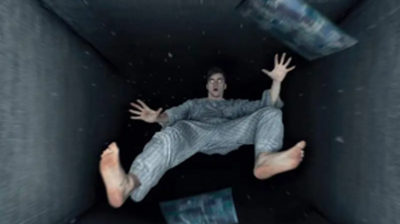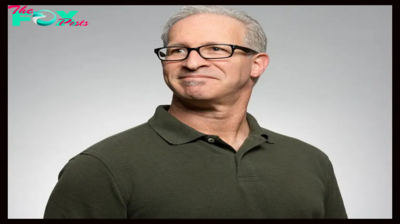Entertainment
Nicholas Collon’s Aurora defy live performance conventions in an unforgettable and heartfelt approach – Seen and Heard Worldwide
 United Kingdom R. Strauss, Beethoven: Tom Service (presenter), Aurora Orchestra / Nicholas Collon (conductor). Queen Elizabeth Corridor, London, 8.5.2024. (CSa)
United Kingdom R. Strauss, Beethoven: Tom Service (presenter), Aurora Orchestra / Nicholas Collon (conductor). Queen Elizabeth Corridor, London, 8.5.2024. (CSa)

R. Strauss – Metamorphosen
Beethoven – Symphony No.3 ‘Eroica’
There’s a narrative about Igor Stravinsky who, shortly after his arrival in New York in 1939, was engaged by a society hostess to offer a personal recital. ‘Your payment shall be $3000’ wrote the rich socialite, ‘however on the strict situation that you’ll not converse to any of the company’. ‘If that’s the case Madame,’ replied Stravinsky, ‘my payment shall be $2,000’.
Definitely, because the mid-nineteenth century, the foundations and etiquette governing classical live performance performances have with a couple of notable exceptions – Beecham, Bernstein, Barenboim, Schiff and Elder come to thoughts – discouraged musicians speaking to audiences. This stringent conference could have dated from the late seventeenth and eighteenth centuries when orchestras, free of the drawing rooms of noble patrons, started to be heard by the broader public. Musicians have been nonetheless broadly thought to be court docket servants, anticipated to bow in deferential gratitude, however to stay mute.
Nor, typically talking, have musicians invited audiences to take part. The origins of viewers silence return even earlier, when church worship was the most typical type of communal music making, and the congregation except authorised to sing alongside, was required to take heed to the celebrant and choir in reverential silence. All of which ends up in the progressive Nicholas Collon, founder and conductor of the outstanding Aurora Orchestra, who has damaged free from the stuffy, static concert-going conventions of the previous. As a substitute, they supply educative and dynamic programmes during which the music is first defined and analysed, after which performed from reminiscence. The Aurora guarantees a type of ‘Orchestra Theatre … adventurous productions that rethink the live performance format [and] daring new methods to interact with orchestral music.’
These guarantees have been absolutely realised at their Queen Elizabeth Corridor live performance. Reprising a programme first heard on the BBC Proms in 2017, Collon working hand-in-glove with the erudite and irrepressibly buoyant music journalist Tom Service, in contrast and contrasted Richard Strauss’s Metamorphosen and Beethoven’s ground-breaking Symphony No.3 ‘Eroica’ earlier than the 2 works have been carried out by coronary heart. The duo’s well-oiled, lightning introduction was illuminating, amusing, unpatronizing and (rescheduled BBC Radio 3 please observe) by no means dumbed down. They lifted up the bonnet of every piece, so to talk, and defined the compositional mechanics beneath, which they illustrated with excerpts from cleverly choreographed and always shifting teams of musicians or particular person Gamers. Virtually on the outset of the night, the viewers, divided in two sections, have been inspired to sing the easy melody underpinning the opening Allegro of the Eroica and clap its alternating rhythms. ‘Assume sizzling cross buns with a handy guide a rough ending!’ recommended Service. In one other playful second, Collon with droll humour launched us to ‘Steve … the person who Beethoven stored up his sleeve’. At this level the Aurora’s principal oboist Steven Hudson emerged and stood centre stage to play the primary motion’s overlying theme. Then got here an enlightening evaluation of the Symphony’s sombre second motion Marche funebre, and Metamorphosen, Strauss’s grief crammed research for twenty-three solo strings.
Emphasising the shut relationship between these two works, passages from every have been ingeniously woven collectively, serving to us to know the choice to pair them in a single live performance. Final got here an insightful have a look at the fugal part of the Eroica’s finale, with the orchestra positioned in an excellent horseshoe, marking Beethoven’s unorthodox syncopations with some well-timed foot-stamping and a triumphant ‘oi’ on the finish of every phrase.
Metamorphosen was the primary piece to be performed in full. It was accomplished in 1945, two weeks after Hitler had dedicated suicide. Strauss was nearly on the finish of his life and returning to the bombed ruins of Munich was compelled to confront the destruction of his metropolis, his homeland, and 2000 years of German tradition. The Aurora’s strings, all standing save for cellos and double basses, have been effectively coordinated and finely balanced. (The strings stood within the Beethoven too, together with the brass and woodwind.) The musicians performed Strauss by coronary heart and from the center, giving every swelling phrase clear traces and dense textures, and sweeping one away in an elegiac and at occasions unbearably shifting account. The Barbican Corridor’s heat acoustic labored notably effectively for them, bathing the contrapuntal interaction between the devices with the heat and intimacy of a chamber recital.

Damaged fragments of the Funeral March from the Eroica flitted, ghost-like, by way of the final tragic minutes of the Strauss, however Beethoven’s defiant spirit arose triumphant and transcendent within the live performance’s second half: a radiant and full-blooded rendition of the Eroica in its entirety. Collon and his band drove the music with startling urgency and vitality; a efficiency so recent it felt as if the ink on the absent music sheets was nonetheless moist. The opening Allegro con brio was taken at a brisk tempo, with some exceptionally crisp taking part in from the woodwind and brass. The solemnity of the second motion was dispelled by an imposing fugue – ‘a sudden ray of sunshine in a darkish sky’ in line with the musicologist Sir Charles Groves – magnificently performed right here by the strings. A burnished horn trio within the Scherzo from Annemarie Federle and her colleagues, gave method to an explosive Finale and Presto coda taken at lightning-speed.
Wreathed in smiles, the orchestra members embraced one another and acknowledging the cheering viewers, bowed in gratitude, however not in deference. Fanning out deep into the corridor to offer an encore (a repeat of the dazzling Presto coda) the musicians stood shoulder to shoulder with their public, taking part in from their hearts as earlier than. This was certainly a marvellous new method to have interaction with orchestral music, and a night which is able to stay within the reminiscence.
Chris Sallon
-

 Entertainment3h ago
Entertainment3h agoWhat to Know About Denzel Washington’s Gladiator II Character
-

 Entertainment5h ago
Entertainment5h agoChanges Made in New York to “Men Working” Construction Signs
-

 Entertainment13h ago
Entertainment13h agoRemembering Song Jae-rim: A Look at His Best Movies and K-Drama Performances
-

 Entertainment1d ago
Entertainment1d agoAmerica On CoffeeWe’re simply inviting you to take a timeout into the rhythmic ambiance of our breakfast, brunch and/or espresso alternatives. We’re pleased everytime you cease by.SELF CONTROL
-

 Entertainment1d ago
Entertainment1d agoOrange County Choppers Is Ready For Its Big Comeback
-

 Entertainment1d ago
Entertainment1d agoThe Real Story of Geta and Caracalla, the Roman Brother Emperors in Gladiator II
-

 Entertainment1d ago
Entertainment1d agoWhat Gladiator II Gets Right and Wrong About Real Fights in the Colosseum
-

 Entertainment1d ago
Entertainment1d agoSki Area Officially Opens the Ski Season For New York



















